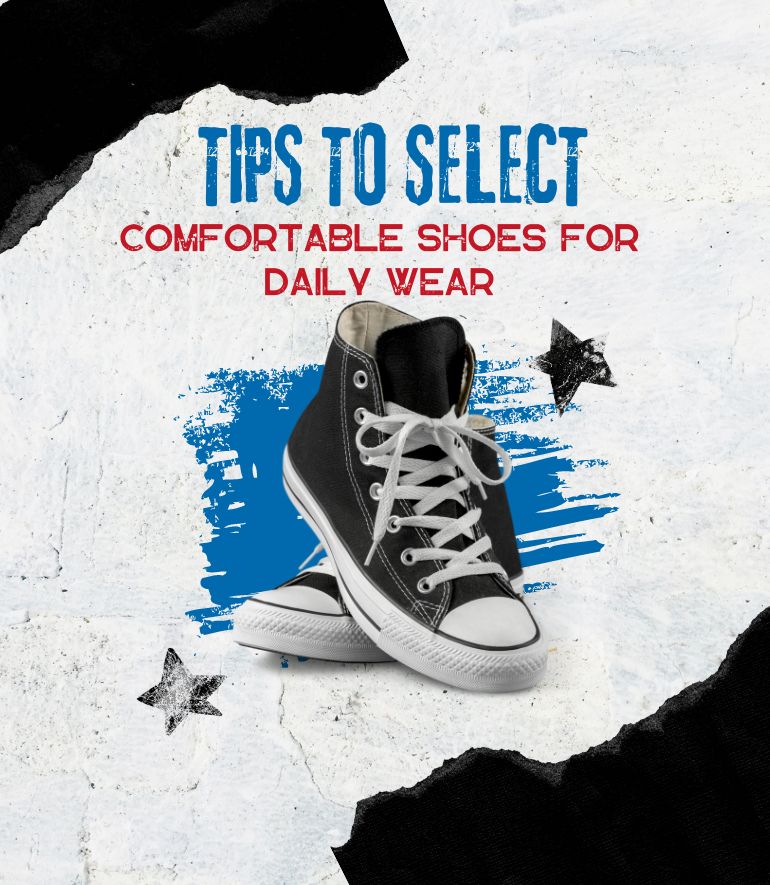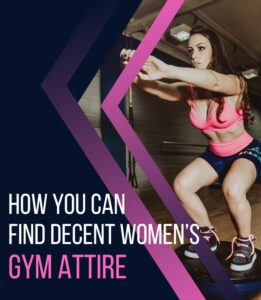Shoes are such an integral part of our daily lives. The right pair can make you feel like you’re walking on air, while the wrong pair can ruin your whole day and even cause foot pain. When looking for comfortable shoes to wear daily, keep these tips in mind:
Consider the width and length
You want shoes that aren’t too tight or too loose. Trying them on in person is ideal so you can get a feel for the fit. But if you must shop online, look for shoes with a roomy toe box to avoid pinched toes. If you have narrow feet, seek out shoes labeled “narrow.” If those aren’t on the shelf, you’ll want to try on a variety to find the best fit. Just make sure your foot isn’t compressed in any way when you’re standing up. And let’s not forget about length. Your shoe should cover your entire foot from heel to toe without pinching or letting your foot slide out.
Wear socks that are more than half a size larger than your feet
Wear socks that are more than half a size larger than your feet to make room for your toes.
This is especially important if you have wide feet, or if the shoes are tight on the sides of the toes. Wearing socks that are too small will cause blisters and discomfort, and may even result in injury if worn for prolonged periods of time.
Avoid wearing too-tight or too-loose socks with shoes; either extreme can lead to pain and discomfort at best, or serious medical conditions such as plantar fasciitis (heel pain) or bunions at worst!
Wear a pair of shoes in stores before you make the purchase
Walking around the store is a good way to see how comfortable your shoes are. And if you are shopping from good footwear brands then they will assist you more by clearing out all your confusions! You can also try on different pairs for comparison, but be careful not to wear them out; this way, if there’s something wrong with one shoe, it won’t affect your ability to walk normally during your actual day-to-day activities!
Don’t wear high heels every day
If you’re a woman who wears high heels every day, then I assume that’s because they make your legs look longer and sexier. But here’s the thing: they don’t actually do that. Your body actually perceives them as uncomfortable and unnatural, so it shifts its weight around in order to try to relieve the pressure of standing on something that isn’t flat ground. This causes back pain and foot pain as well as other discomfort in all parts of your body (including knees, hips and ankles).
High heels are just not good for our bodies–they were designed for women who had servants carrying their purses while they walked around town!
Comfort is the important factor in selecting shoes
Comfort is a subjective term and one that varies from person to person. However, there are some universal truths about comfort in shoes. For example, if your feet hurt when you wear them, they are not comfortable. If your shoes feel like they were made for someone else’s feet (too loose or too tight), then they’re probably not very comfortable for you either. Comfort is important because it affects your health and wellbeing; it affects how well you perform at work or play; it affects how attractive you look; and finally, because of all of this combined–it can affect longevity!
Comfortable shoes are also important when you are going to the gym. The combo of comfortable shoes with shorts and stringer tank tops, make it more relaxed and comfortable!
Avoid buying a shoe that’s too wide or too narrow
It’s imperative that shoes fit properly in both width and length. Shoes that are too wide will lead to your foot sliding around inside, causing painful blisters and friction. You may also experience toes feeling numb or falling asleep due to inadequate support.
On the other side of the spectrum, shoes that are too narrow squeeze the toes together unnaturally. This forces them into an abnormal position, cramping them together. The constant pressure and rubbing then causes blisters, corns, calluses, and bunions over time.
When trying on shoes, focus on finding ones where your toes have just enough wiggle room in the toe box. You should be able to freely spread out your toes without them feeling jammed together. Aim for around a half inch of space between the tip of your longest toe and the shoe’s end.
Check for flexibility and stability of the sole
The ideal sole provides both flexibility and support. Look for shoes where you can bend the sole easily at the ball of the foot. But when standing with full body weight on one foot, the sole shouldn’t sink down completely. Some level of rigidity in the sole lends stability and prevents strain on feet and ankles. But the sole can’t be totally inflexible either. Some pliability allows the shoe to move naturally with the bending of your foot as you walk.
Test sole flexibility on shoes before buying. Bend the toe upwards – it shouldn’t be completely stiff but rather have a moderate amount of give. The midsole area under the arch should also have a little flexibility.
Choose shoes with a thick sockliner
The sockliner is the inner layer of cushioning in shoes underneath the insoles. This is a key element that protects against blisters. A thicker sockliner acts as extra padding between your foot and the shoe. Without adequate sockliner padding, your foot has more friction against the insides of the shoe. This builds up heat and pressure on areas like the heels, toes, and balls of the feet – prime spots for blisters. Prioritize shoes with thick, cushiony sockliners. Materials like memory foam provide soft, customizable comfort. Moisture-wicking properties also help keep feet dry and blister-free.
Make sure your shoes fit properly
Along with getting the width and length right, shoes should fit snugly around the heel and midfoot. If shoes are loose in the heel, your foot will repetitively slide forward and back while walking. This causes blisters on the backs of heels and ankles. When trying on shoes, simulate how your foot moves during activity. Walk, jump, and bend your foot forward to check for tightness or slippage. Properly fitted shoes keep your foot stable and supported through all motions. For those with narrow feet, seek shoes with built-in features like lace loops and ghillie lacing to customize snugness. Wider feet do well in shoes with adjustable closures like velcro straps or buckles.
Do not wear new shoes in the beginning
It’s tempting to put on a brand new pair of shoes and wear them all day. But unbroken-in shoes can wreak havoc on your feet. Stiff materials cause irritation, blisters, and pain if worn for too long. Gradually break in new shoes instead. Wear them for short periods at first, like around the house. Increase wear time slowly over several weeks. This allows the materials to adapt to the unique shape of your feet.
Conclusion
We hope that you’ve found these tips helpful and will be able to apply them when you’re next out shopping for shoes. As you can see, there are many factors that go into choosing comfortable shoes. It’s not just about finding ones with good arch support or a thick sock liner; it also means making sure they fit well and don’t cause any pain or discomfort in your feet!
Properly fitted shoes allow you to walk, stand, and move pain-free. Keep width, length, sole flexibility, sockliner thickness, and break-in periods in mind during your search. With knowledge of what makes a shoe truly comfortable, you can confidently shop for footwear that supports you both literally and figuratively.





This is amazing such great advice
I always end up buying wrong shoes hopefully they will end after this article
Thank you for sharing this
Must known tips. I always struggle with finding perfect fir shoe pairs. I can assume now my trouble will resolve with ease.
This is such a helpful guide for someone who is new to wear shoes or try sports gears. Comfort is the key. I love soft souls as they provide maximum comfort.
This is the second trouble for everyone while getting ready to go out, and the first trouble is picking the right wear. I agree with your points mentioned here. I will recommend this blog to my friend’s group and YES, these tips will really help when I choose my next footwear.
For me comfort is of paramount importance when it comes to footwear, and more so when it is daily wear. The tip of wearing larger-sized socks is really very sensible.
These are excellent tips for selecting comfortable shoes for daily wear. I especially like the suggestion to look for Check for flexibility and stability of the sole, as those are essential for maintaining good posture. Also, it’s important to remember that comfort should always take precedence over style when selecting shoes. Thanks for this great advice!